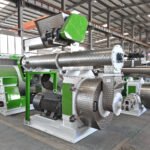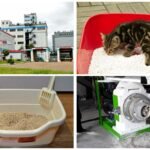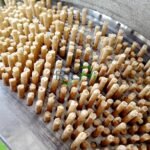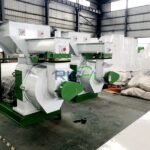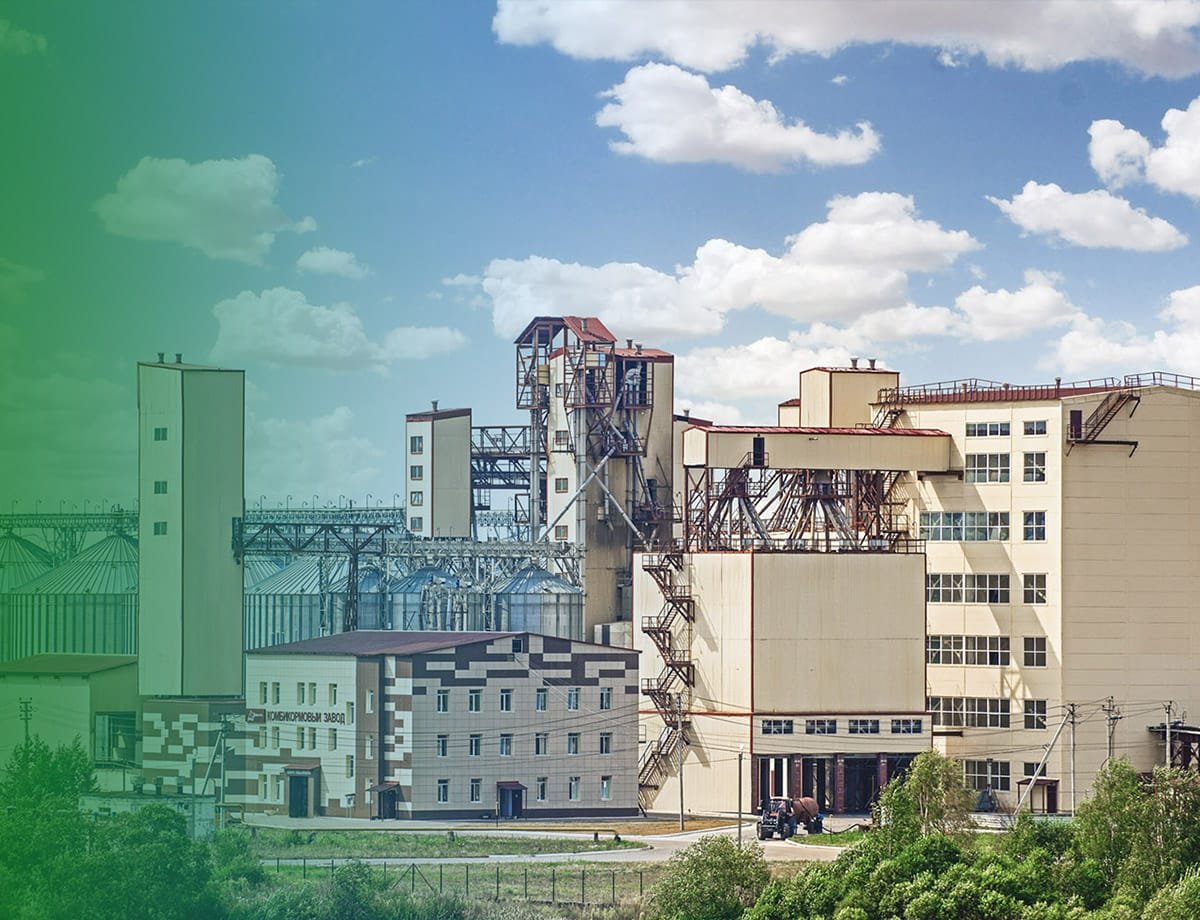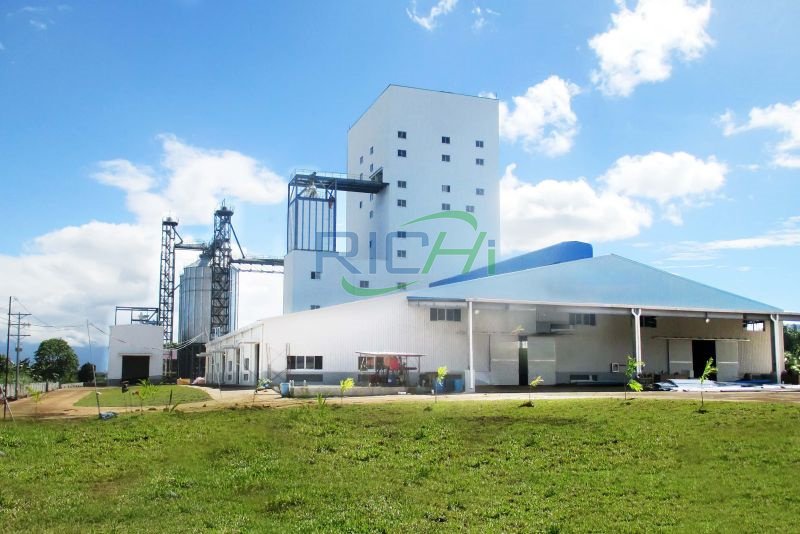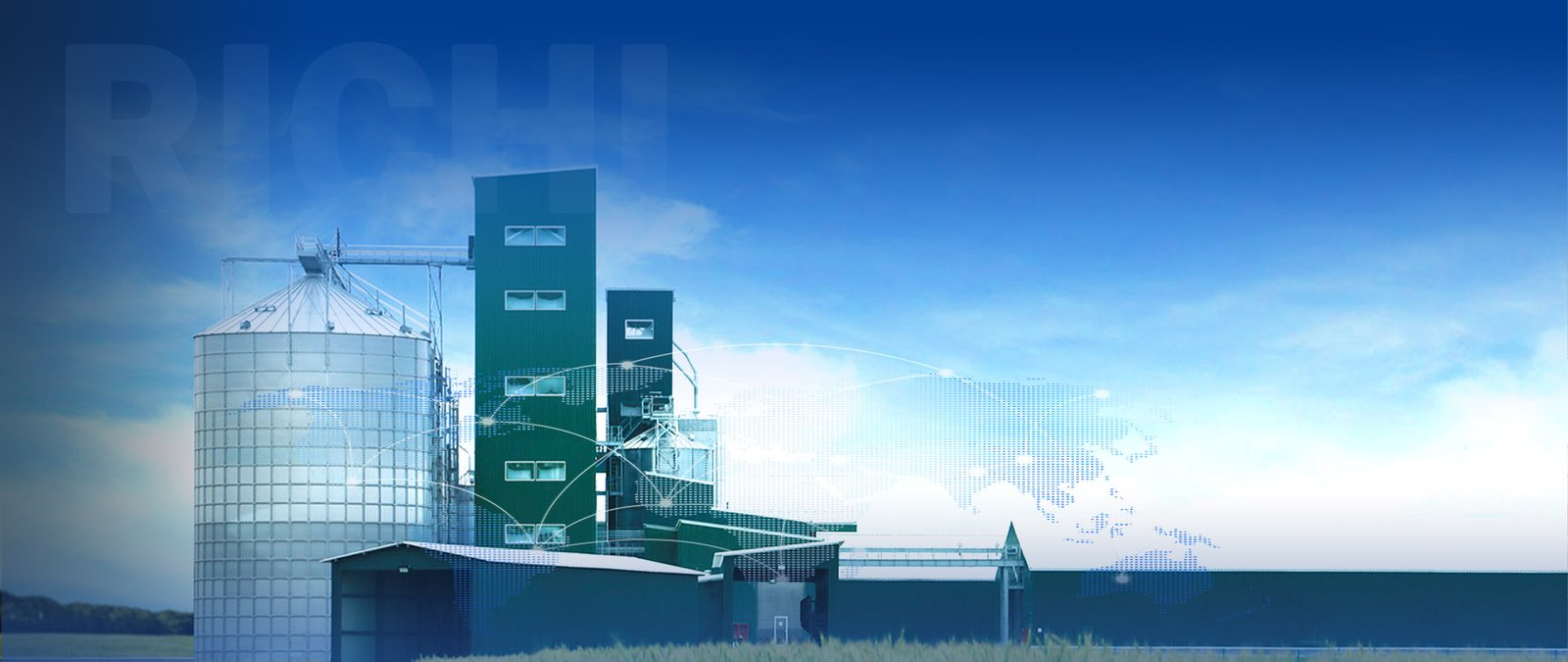The Regenerative Organic Alliance in the United States has launched a new framework for Regenerative Organic Certification (ROC) in that country and beyond. The ROC certification requires compliance to the US National Organic Program (or other countries’ programs deemed equivalent), but then takes the NOP standards a step further.
ROC intends to promote holistic agriculture practices by increasing soil organic matter over time, sequestering carbon below and above ground, improving animal welfare and providing economic stability and fairness for farmers, ranchers, and workers. ROC consists of three modules: Soil Health and Land Management, Animal Welfare, and Farmer and Worker Fairness.
In comparison, the Canadian Organic Standards (COS) include statements indicating that soil fertility is maintained and enhanced by promoting optimal biological activity within the soil and conserving soil resources. It ensures livestock are provided with spaces allowances and living conditions appropriate to their behavioral requirements to minimize stress, and are fed organically produced feed, promoting good health and preventing disease. The principle of fairness is one of the four international principles upon which the COS is based—however it does not have specific clauses to measure economic stability and fairness in relationships within an organic system plan.
As we in Canada prepare to update our COS, let’s take a look at how these two systems compare.
Visit the following websites to read the full standards:
Regenerative Organic Certification: RegenOrganic.org
Canadian Organic Standards: www.publications.gc.ca/site/eng/9.854643/publication.html
COG’s Guide to the Canadian Organic Standards: www.cog.ca/home/resources/standard-guide/
General Approach
The ROC intends to leverage and advance organic standards domestically and internationally, seeing itself as a mechanism to support continual improvement through its three-tiered levels. In Canada, we intentionally separated our standards from the legal enforcement structure, so that specific clauses could be regularly updated to more effectively demonstrate the four guiding principles in practice as our understanding and skill in implementation grows.
The ROC’s Bronze, Silver and Gold levels have specific timelines for operations to totally convert to organic management, as well as restrictions specific to each, in terms of label use for promotion. Each level has required practices, optional practices and critical tolerances which must be remediated within 30 days. The COS does not include timelines for complete transition to organic management, nor does it contain specifics regarding certifier management, leaving enforcement to the external Conformity Verification Bodies overseeing equivalence between organic certifiers and their decisions. In the past, some Canadian organic organizations have considered implementing a tiered certification system but decided it would be too confusing for customers.
The path for chemical agriculture producers to achieve ROC is summarized as Chemical, Transitional, Certified Organic, ROC Bronze, ROC Silver, ROC Gold. Regenerative practices and definitions are provided to help chemical and transitional producers familiarize themselves with regenerative principles adopted as they transition. The COS definitions and sections specific to crops, livestock and processing are intended for certification and regulation to prevent deceptive practices in the marketplace. The certifiers assess operational compliance recognizing that differences between Canada’s agricultural regions require varying practices to meet production needs.
Soil Health and Land Management
The main objective of the soil fertility and crop nutrient management program in the COS is to establish and maintain a fertile soil using practices that maintain or increase soil humus levels, that promote an optimum balance and supply of nutrients, and that stimulate biological activity within the soil.
The ROC provides a list of recommended soil and land management practices to be implemented on farms, with different numbers of practices required for the different ROC levels. This list of practices includes a number of specifics that are not directly referenced in the COS: integrated crops and animals, moisture sensing technologies for irrigation, forest stand improvement and forest slash treatment, pollinator and wildlife habitat, pollinator strips, silvo-pasture establishment (i.e., agroforestry or orchard plantings integrated with livestock), and reclamation of landslide and mined land. The 16 additional practices listed are consistent with those in Section 5 of the COS, including the basics of improving soil organic matter, crop rotations, cover crops, compost and manure use, riparian management and buffer strips. However, the ROC offers more detailed requirements as to how many of these practices are implemented.
The three ROC levels require different numbers and attributes of cover crops and increasing complexity of crop rotations. The Gold level requires no-till practices be incorporated, with no more than one tillage operation (no deeper than 10 inches) every three years for annual crops.
ROC operations explicitly plan to conserve and restore natural bodies of water, wetland, riparian areas, and associated habitats, while the COS does not specifically reference these areas, other than riparian management. The ROC includes a prohibition on clearing old-growth forests and bringing land with high conservation value into agricultural production.
Like the COS, the ROC does not allow for aquaponics, hydroponics, and other soilless practices to be certified. Both standards prioritize use of on-farm fertility first, with the ROC prohibiting use of liquid manure. Both standards restrict pesticides, with the ROC additionally referencing Xerces Society’s “Toxicity of Common Organic-Approved Pesticides to Bees.” Both standards prohibit genetically modified inputs and cloning.
ROC producers must conduct Regenerative Organic Certification Soil Health Lab Tests in accordance with procedures laid out by an accredited organization, such as a university, lab, or private organization with expertise in analyzing soil health analysis. Tests are to be conducted at initial certification inquiry, and then every three years thereafter. Producers must allow access to land for deep core soil samples, beyond the scope of the Soil Health Lab Test, once every six years. The COS does not mandate soil testing.
ROC operators use computer modelling tools such as the COMET-Farm Voluntary Carbon Reporting Tool or the Cool Farm Tool to determine their annual greenhouse gas emissions and sequestrations. Operators document practices in the computer-based models, review them with the annual auditor, and submit documentation to their certifying body. The COS does not address greenhouse gas emissions or the use of such tools.
Animal Welfare and Livestock Production
The ROC and the COS both emphasize humane animal production approaches that honour the five freedoms: freedom from hunger and thirst; freedom from discomfort; freedom from pain, injury or disease; freedom to express normal behavior; and freedom from fear and distress. Both standards also include general statements outlining requirements to meet applicable laws or codes of practice for livestock production, including housing, transportation and slaughter methods. This common ground results in the two standards having a great deal of similarity in many aspects. However, some differences between these sets of standards do exist.
In addition to abiding by national animal welfare laws and meeting USDA organic standards, the ROC requires producers to hold animal welfare certification through another body, such as Certified Humane or Animal Welfare Approved. The COS does not require this additional certification, but outlines specific required production practices that are very similar in scope and detail to those of animal welfare certifications.
Both standards require livestock feed to be from organic sources; ROC Silver and Gold levels require a certain proportion of the diet to be from regenerative sources or produced on-farm. In both systems, ruminants require a significant proportion of forages in the diet; ROC Gold requires ruminants to be entirely grass fed, including during the finishing phase.
The ROC has greater emphasis on livestock being raised outdoors than the COS, stating that “livestock should generally live, eat and sleep outdoors on pasture,” with shelter provided by housing structures, buildings or natural features such as trees. Chickens are to be housed in mobile coops and given access to perches. Allowances for temporary confinement are very limited in the ROC standard. The COS states that livestock production should be a land-based activity, with grazing requirements for herbivores and access to the outdoors for all other types of livestock. However, in our cold climate, the COS allows livestock to be housed primarily indoors, as long as access to the outdoors is provided and other animal housing requirements, such as freedom of movement and space allowances, are met.
Many physical alterations are prohibited by both the ROC and the COS. However, the ROC standard is stricter, prohibiting practices such as branding and de-horning that are allowed under the COS. The COS outlines the procedures and other considerations to be observed to minimize animal pain and suffering when these practices are deemed necessary.
Requirements related to animal health and treatment of sick or injured animals are very similar in the two standards. Both standards emphasize the importance of vaccination to prevent disease and prompt treatment of animals to prevent suffering, stipulating that animals are not to be denied treatment in order to preserve organic or regenerative certification status.
Animal transport and slaughter requirements take a similar tone in the two systems, emphasizing minimization of discomfort, injury and stress, although they vary in the level of detail provided on specific aspects.
Farmer and Worker Fairness
ROC outlines a range of requirements related to social issues in farming. Much of this portion of the standard relates to treatment of farm workers, with sections on child labour, physical and sexual abuse, freedom of association, health and safety, wages and more. Also included are requirements for fairness in buying practices and pricing.
The COS captures the spirit of these requirements in one of its core principles—the principle of fairness—but does not spell out the letter of the law. While Canadian labour laws address many issues related to treatment of workers, some concerns remain about unfair practices in organic agriculture (see article “Fairness in Organic Agriculture” in the Spring 2018 issue of TCOG). A petition has been put forward to include specific wording on social fairness in the next version of the COS.
Table 1. Soil Health and Land Management standards in the Regenerative Organic Certification (ROC) framework, as compared to the current version of the Canadian Organic Standards (COS).
| Regenerative Organic Certification | Canadian Organic Standards | |
| Cover Crops | Use of cover crops on an annual basis and/or perennial crops across all producing acreage is required for Silver and Gold.Land maintains adequate cover year-round. Roots remain in the ground (if possible), otherwise, maintenance of dead/rolled cover crop and/or leaves is required. | The soil fertility and biological activity shall be maintained or increased, through:a) crop rotations that are as varied as possible and include plough-down, legumes, catch crops and deep-rooting plants;b) incorporation of plant and animal matter, including composted animal and plant matter and non-composted plant matter, specifically legumes, plough-down crops or deep-rooting plants within the framework of an appropriate multiyear rotation plan. |
| Crop Rotations | Operations use crop rotations. For both annual and perennial systems, crop rotations are implemented to provide for pest management.Silver: Three-crop rotation or use of perennial system. Gold: Seven-crop rotation or use of perennial system. | |
| Tillage | Tillage should be infrequent and only occur when necessary. Tillage should never be deeper than 10 inches, except during preparation/planting of certain perennials (i.e. orchards, vineyards, etc.).Gold: No-till practices must be incorporated, with no more than one tillage operation (no deeper than 10 inches) every three years for annual crops. | Tillage and cultivation practices shall maintain or improve the physical, chemical and biological condition of soil, and minimize damage to the structure and tilth of soil, and soil erosion. |
| Rotational Grazing | Animals are used in high concentrations for brief periods of time (i.e. mob grazing). Pastures are divided into paddocks, with animals moved regularly. Stocking rates determined according to Demeter Biodynamic standards. | Not addressed |
| Soilless Practices | Aquaponics, hydroponics, and other soilless practices are not eligible for ROC. Exceptions are made for plants intended to be grown in water, such as water cress and certain ornamentals. | Hydroponic and aeroponic productions are prohibited. |
| Container growing | Container growing where crops are never integrated into a field for the majority of a crop’s life is not eligible for ROC. | Container systems permitted.Soil used in a container system, with the exception of transplants, shall provide nutrients to plants continuously, contain a mineral fraction (sand, silt or clay) and an organic fraction, and support life and ecosystem diversity. |
| Manure sources | The operation aims for self‐sufficiency in its manures and fertilizers. Importation of certain fertilizers may only be used as demand dictates and must be approved under USDA Organic standards.Manure can be directly deposited by rotationally grazing animals.The use of liquid manure is not permitted. | Animal manure produced on the operation shall be used first, then organic manure from other sources may be used.If organic manure is not commercially available, non-organic manure is permitted from operations that do not tightly confine animals or deny them light. Organic operations should make it a priority to use manure obtained from transitional or extensive livestock operations, not from landless livestock production units or from livestock operations that use genetically engineered (GE) ingredients and/or GE derivatives in animal feeds. |
| Imported Nitrogen and Phosphorus | In general, an operation does not import more than 36 lbs N/acre and 31 lbs P/acre over the crop rotation/cultivated area annually. | The organic matter produced on the operation shall be the basis of the nutrient cycling program.Fertility recommendations and applications shall be based on observed, diagnosed and documented deficiencies. |
| Biodiversity | Invasive plants and animals are to be monitored and managed.No hunting, fishing or gathering of rare or endangered species on the property, or harm to the species’ habitat. | Not addressed |
| Wastewater and Waste | Direct discharge of untreated wastewater into natural waterways or soil is prohibited.Burial or open burning of waste on site is not permitted. | Not addressed |
| Synthetic Chemicals | Substances not permitted under USDA Organic or equivalent standard are prohibited for pest control, weed control, fertilizer, or other application.Pesticides that are highly toxic to pollinators, as defined by Xerces Society’s “Toxicity of Common Organic-Approved Pesticides to Bees” are not allowed. | Substances not included on the Permitted Substances List are prohibited for pest control, weed control, fertilizer or other applications. |
Adapted from the Framework for Regenerative Organic Certification (August 2018: Pilot Program Version) and the Canadian Organic Standards (Organic production systems: General principles and management standards, CAN/CGSB-32.310-2015).
Table 2. Animal Welfare standards in the Regenerative Organic Certification (ROC) framework, as compared to the current version of the Canadian Organic Standards (COS).
| Regenerative Organic Certification | Canadian Organic Standards | |
| Feed for Monogastrics | Feed shall be from organic sources; Silver and Gold levels require a portion of feed to be from regenerative organic or on-farm sources. | Feed shall be from organic sources.Pigs and poultry shall receive some vegetable matter besides grain. |
| Feed for Ruminants | At least 50% of diet should be grass/forage/baleage/hay, with higher proportions for Silver and Gold levels (100% grass-fed for Gold certification). | At least 60% of diet should be from hay, fresh or dried fodder, or ensiled forages (with minimum long-fibre requirement).Herbivores (adults) require at least 30% of their total forage intake to be grazed forages, with greater proportions during high forage growth periods. |
| Forced Feeding | Forced feeding is not permitted, except for life-saving purposes. | Forced feeding of ducks and geese is not permitted. |
| Access to the Outdoors | Livestock should generally live, eat and sleep outdoors on pasture. Shelter may be provided by natural features or buildings.Shelters for avian species include perches for roosting and sleeping. | Access to outdoors is required but livestock can be housed in barns.Requires appropriate resting and bedded areas to meet needs of animals and sufficient space to express normal patterns of behaviour. |
| Environment & Shelter | Chickens require mobile coops that are moved to fresh grass regularly at least once per week during the grazing season. | Chickens can be in a fixed building with access to pasture. If in mobile coops they must be moved at least every 4 days. |
| Temporary Confinement | Livestock may be confined for a maximum of 2 hours to collect manure or milk dairy animals. Exceptions made when health or safety of animals is threatened.Operations do not use any type of temporary of permanent confinement that restricts mobility – cages, crates, tie stalls. | Tie stalls are allowed in existing dairy barns but not in new construction. |
| Lighting | Animals have exposure to natural light and are not exposed to artificial light for more than 16 hours. A minimum period of 8 hours of continuous darkness must be provided. | Exposure to natural light required. If artificial light is used, total duration of light shall not exceed 16 hours; must provide 8 hours of continuous darkness. |
| Physical Modifications | Operations do not use the following methods: beak trimming; dehorning and de-budding; branding. | Beak trimming allowed when necessary to control problem behaviour having negative impact on birds.Dehorning and branding allowed with requirements for age, methods and use of analgesics. |
| Health | May not withhold medical treatment from a sick animal to preserve certification status.Vaccines are used for prevention of disease. In an emergency must use antibiotics if necessary to save life or prevent suffering on recommendation of vet.Animal must be segregated; milk from treated animals may not be fed to calves. | May not withhold medical treatment from a sick animal to preserve organic status.Vaccines are used for prevention of disease. In an emergency must use antibiotics if necessary to save life or prevent suffering on recommendation of vet.Animal must be segregated. Products from sick animals or those undergoing treatment may not be fed to organic livestock. |
| Slaughter | Specific details for pre-slaughter handling and slaughter/stunning methods that result in immediate insensitivity. | Stress, injury and suffering shall be minimized |
| Transportation | Transportation time is less than 13 hours. Food and water is not withdrawn for more than 12 hours prior to slaughter. | Duration as short as possible. Requirements for feed, water and rest if transportation exceeds 5 hours. |
Adapted from the Framework for Regenerative Organic Certification (August 2018: Pilot Program Version) and the Canadian Organic Standards (Organic production systems: General principles and management standards, CAN/CGSB-32.310-2015).
*Correction: The print version of this article in the Fall/Winter 2018 issue of TCOG magazine erroneously states that, under the Canadian Organic Standards (COS), manure cannot be sourced from livestock operations that use genetically engineered (GE) feed or ingredients. This statement has been corrected in the online version of this article, in accordance with the COS.



